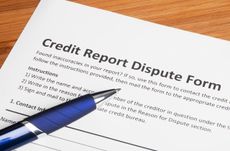New Rules for Your Flexible Spending Account
Many companies offer more flexibility on what was once a use-it-or-lose-it December 31 deadline for using FSA money. (Plus, higher contribution limits.)

Question: Do I have to use up all of the money in my flexible spending account by December 31? If so, what kinds of medical expenses can I use it on in the last few weeks of the year?
Answer: Ask your employer about the rules for your flexible spending account plan. In the past, most plans had a use-it-or-lose-it deadline of December 31 for spending tax-free FSA money for out-of-pocket medical expenses. But some employers now give you until March 15 of the following year to use the money, or let you roll over $500 from one year to the next.
A study by the Society of Human Resource Management found that 46% of companies that offer FSAs let you roll over $500 from one year to the next, and 37% offer a grace period until March 15 to use the money (employers can’t offer both the rollover and the grace period). That leaves about 17% of employers without a rollover or grace period.

Sign up for Kiplinger’s Free E-Newsletters
Profit and prosper with the best of expert advice on investing, taxes, retirement, personal finance and more - straight to your e-mail.
Profit and prosper with the best of expert advice - straight to your e-mail.
“In most cases, this is a December 31 deadline, but some companies may operate on a different plan-year schedule,” says Jeremy Miller, CEO of FSAstore.com, an online drugstore that focuses specifically on selling FSA-eligible items. About $450 million in FSA dollars go unspent each year, or about $30 per person, on average, Miller says. People with an end-of-year deadline, though, typically end up with a $200 unused balance, he says.
There are plenty of items you can use the money for before the end of the year. You may have time to make some year-end appointments with the dentist or eye doctor, for example, and use the FSA money to buy glasses, prescription sunglasses, contact lenses and contact lens solution. You can also stock up on eligible drugstore items, such as thermometers, blood pressure monitors, prenatal vitamins, breast pumps, eligible sunscreen (must have an SPF of 15 or higher), hot/cold packs, first aid kids, bandages or orthopedic braces.
Some FSA plans provide a debit card that makes it easy to buy eligible items at the drugstore. You can also look up eligible items and rules (some require a prescription, some don’t) on FSAstore.com’s eligibility list.
Also, next year you will be able to set aside slightly more in your FSA plan. The maximum limit for medical FSAs increases to $2,700 in 2019, up from $2,650 in 2018.

As the "Ask Kim" columnist for Kiplinger's Personal Finance, Lankford receives hundreds of personal finance questions from readers every month. She is the author of Rescue Your Financial Life (McGraw-Hill, 2003), The Insurance Maze: How You Can Save Money on Insurance -- and Still Get the Coverage You Need (Kaplan, 2006), Kiplinger's Ask Kim for Money Smart Solutions (Kaplan, 2007) and The Kiplinger/BBB Personal Finance Guide for Military Families. She is frequently featured as a financial expert on television and radio, including NBC's Today Show, CNN, CNBC and National Public Radio.
-
 What Happens Financially When You Work One More Year?
What Happens Financially When You Work One More Year?The impact of saving more, spending less later and benefiting from an extra year or more of compounding can be truly staggering.
By Andrew Rosen, CFP®, CEP Published
-
 Seven Ways to Spend Your Tax Refund
Seven Ways to Spend Your Tax RefundYou may want to splurge, but using your tax refund to save for the future or pay down debt is a much better idea — even if not as fun.
By Kathryn Pomroy Published
-
 Credit Report Error? They All Matter
Credit Report Error? They All Mattercredit & debt Don't dismiss a minor error. It could be the sign of something more serious.
By Kimberly Lankford Published
-
 Insurance for a Learning Driver
Insurance for a Learning Driverinsurance Adding a teen driver to your plan will raise premiums, but there are things you can do to help reduce them.
By Kimberly Lankford Published
-
 529 Plans Aren’t Just for Kids
529 Plans Aren’t Just for Kids529 Plans You don’t have to be college-age to use the money tax-free, but there are stipulations.
By Kimberly Lankford Published
-
 When to Transfer Ownership of a Custodial Account
When to Transfer Ownership of a Custodial Accountsavings Before your child turns 18, you should check with your broker about the account's age of majority and termination.
By Kimberly Lankford Published
-
 Borrowers Get More Time to Repay 401(k) Loans
Borrowers Get More Time to Repay 401(k) Loansretirement If you leave your job while you have an outstanding 401(k) loan, Uncle Sam now gives you extra time to repay it -- thanks to the new tax law.
By Kimberly Lankford Published
-
 When It Pays to Buy Travel Insurance
When It Pays to Buy Travel InsuranceTravel Investing in travel insurance can help recover some costs when your vacation gets ruined by a natural disaster, medical emergency or other catastrophe.
By Kimberly Lankford Published
-
 What Travel Insurance Covers When Planes Are Grounded
What Travel Insurance Covers When Planes Are GroundedTravel Your travel insurance might help with some costs if your trip was delayed because of the recent grounding of Boeing 737 Max planes.
By Kimberly Lankford Published
-
 Ways to Spend Your Flexible Spending Account Money by March 15 Deadline
Ways to Spend Your Flexible Spending Account Money by March 15 Deadlinespending Many workers will be hitting the drugstore in the next few days to use up leftover flexible spending account money from 2018 so they don’t lose it.
By Kimberly Lankford Published